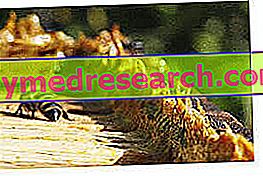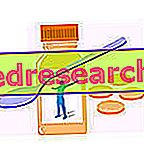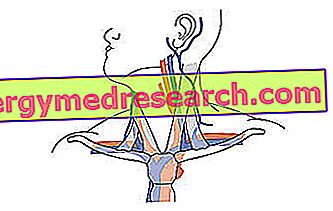
What is Propolis
Propolis is a widely used herbal remedy, which can derive from both plants and animals: even the latter, in fact, use antibiotic substances to protect themselves from bacteria, viruses, fungi and parasites.

Propolis is used by bees to "paint" the internal walls of the hive, in particular the queen's room, which is thus disinfected properly before the spawning begins.
The collected resins are transformed into propolis thanks to the digestive secretions of bees, which contain enzymes that can extract substances with important medicinal properties from the resin.
Active principles
Propolis contains several active ingredients:
- Flavonoids: galangin, apigenin, kaempferol, pinocembrin;
- Aromatic aldehydes: vanillin and isovanillin;
- Polyphenols and aromatic compounds;
- Phenolacids and their esters;
- Benzoic acid derivatives: gentisic acid, salicylic acid and gallic acid;
- Cinnamic acid derivatives: caffeic acid and ferulic acid;
- alcohols
- Phenolic compounds: pterostilbenzene and xanthorreol;
- Terpenes: eudesmol, essential oil (0.5-1.2%).
In addition to these active ingredients, propolis is rich in waxes, resins, balsams, pollens, fats and sterols, amino acids (16%), polysaccharides, trace elements (calcium, iron, copper, cobalt, nickel, zinc, silicon, vanadium and titanium ), B vitamins and provitamin A.
Property
Clinical tests carried out on 16, 000 patients have highlighted the very important activities that propolis is able to exert on the organism: in particular, its high antibacterial, antiviral and antifungal power has been highlighted.
Numerous experiments, both in vivo and in vitro, have demonstrated the ability of propolis, in 10-20% water-alcohol solution, to inhibit the development of various bacterial strains, such as Escherichia coli, Proteus vulgaris, Mycobacterium tuberculosis, Bacillus alvei, Bacillus subtilis, several salmonella, staphylococci, streptococci, Corynebacterium diphtheriae.
The constituents of the propolis most implicated in the antimicrobial activity are, besides the essential oil, the flavonoids (among other things this category of compounds has a key role in strengthening the immune system), in particular galangin, pinocembrin and chrysin, and the chlorogenic, caffeic and benzoic acids.
Therapeutic activities
Antimicrobial activity
Antimicrobial activity is related to the concentration of active ingredients, which unfortunately is extremely variable; this is the reason why it becomes important to be able to standardize the products to be administered on the market.
The synergistic effects that propolis shows in relation to various synthetic antibiotics (such as tetracycline, neomycin, polymyxin, penicillin, streptomycin and viomycin) on cultures of Streptococcus aureus and Escherichia coli are very interesting . This activity is linked both to a direct action on germs and to the stimulus it exerts on the processes of humoral and cell-mediated immunity.
Antifungal activity
The antimycotic activity of propolis is to be attributed to the presence of pinocembrin and pinobankina, in combined and synergistic action with caffeic acid and p-coumarate of benzyl; the experiments have shown and shown in propolis fungicidal properties on Candida infections (albicans, tropicalis, ...), on saccharomycetes, trichophytes and microspores, which cause mycosis on the skin of men and animals.
Fungicide actions have been tried with satisfactory results even on mushrooms that act on the vegetables.
Antiviral activity
The antiviral properties of propolis are mainly to be found in the water-soluble components. Propolis demonstrates good antiviral inhibitory activity on the Herpes simplex and Corona virus genera, but also on the viral strains of influenza A and B, parainfluenza 1-2-3, adenovirus and respiratory viruses.
Propolis - effects and benefits of propolis »



